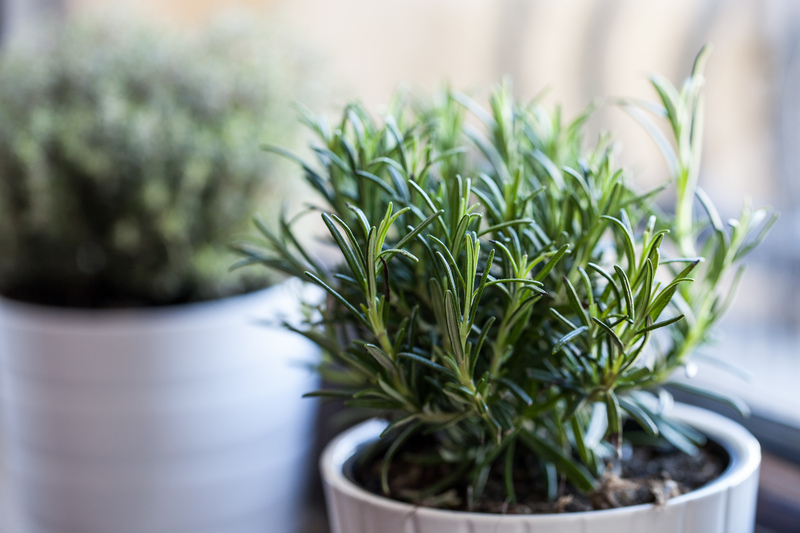Transformative Zen Garden Concepts for Your Peaceful Outdoor Sanctuary
Posted on 19/09/2025
Transformative Zen Garden Concepts for Your Peaceful Outdoor Sanctuary
Creating a peaceful outdoor sanctuary is more than a trend--it's a mindful step towards serenity and well-being. Among the most beloved ways to achieve tranquility in your garden is by incorporating Zen garden concepts. Drawing from centuries-old Japanese aesthetic principles, transformative Zen garden ideas can turn your outdoor space into an oasis of calm, mindfulness, and beauty. This comprehensive guide will introduce you to the principles, elements, and innovative concepts that will help you design your own Zen-inspired garden sanctuary.
What is a Zen Garden?
A Zen garden--also known as karesansui or "dry landscape" garden--originated in Japanese culture as a meditative space designed to inspire reflection, inner peace, and quietude. Traditionally, these gardens are composed of rocks, gravel, plants, and minimalistic elements arranged symbolically to evoke natural landscapes. By embracing transformative Zen concepts, you can reimagine the traditional structure to suit modern lifestyles while preserving its age-old benefits.

The Core Principles of Zen Garden Design
Understanding the ethos behind Zen gardens is crucial to creating an authentic sanctuary. The most essential Zen garden principles include:
- Simplicity (Kanso) - Emphasizing minimal and uncluttered spaces.
- Naturalness (Shizen) - Imitating the effortless beauty of nature.
- Asymmetry (Fukinsei) - Creating harmony through balanced but uneven arrangements.
- Subtlety (Yugen) - Suggesting depth and meaning while avoiding overt decoration.
- Tranquility (Seijaku) - Providing a sense of peacefulness and calm.
By weaving these principles into your design, you lay the groundwork for a transformative Zen garden that emphasizes mindfulness and peace.
Transformative Zen Garden Concepts to Elevate Your Outdoor Sanctuary
1. Embrace Minimalism with Natural Elements
To create a truly transformative Zen sanctuary, focus on minimalistic features using natural materials. Stones, sand, and gravel are central to authentic Zen garden design.
- Sand and gravel are raked into patterns that symbolize water or the flow of energy, offering a physical expression of mindfulness.
- Large rocks or boulders serve as visual focal points, evoking mountains or islands.
- Moss and ground cover plants inject texture and tranquility while reducing the need for high-maintenance lawns.
This approach enhances stillness and creates a space that invites contemplation.
2. Integrate Water Features for Meditative Sound
While traditional Zen gardens are often dry, adding a water feature--such as a koi pond, trickling fountain, or bamboo water spout--can deepen the sense of peace.
- The sound of running water soothes the mind and amplifies your outdoor sanctuary's tranquil atmosphere.
- Strategic placement of water features can also act as a natural divider within your garden, defining smaller meditation zones.
Even a small water basin or stone bowl filled with water can provide a powerful symbolic reminder of reflection and life.
3. Use Pathways to Guide Mindful Movement
A transformative Zen oasis invites movement through the garden. Thoughtful pathways composed of stepping stones, gravel, or timber facilitate meditative walks and slow, mindful exploration.
- Stepping stones arranged asymmetrically echo the imperfect nature of the world, prompting mindfulness with each step.
- Curved pathways encourage slow movement and discovery, allowing contemplation from multiple vantage points.
Well-placed lanterns or boulders along the paths can serve as contemplative pauses on your stroll.
4. Frame the Space with Natural Boundaries
Transform your garden into a true sanctuary by creating a gentle sense of enclosure.
- Bamboo screens, living hedges, or wooden fences can create privacy while maintaining a connection to the outdoors.
- Climbing vines or trellises can further soften boundaries, adding layers of greenery and interest.
This boundary not only enhances privacy but also invites a deeper sensation of calm and seclusion.
5. Include Meditation Spaces and Seating Nooks
No Zen retreat is complete without a spot to sit and reflect. Incorporate simple benches, stone slabs, or weathered wooden platforms nestled among the garden's elements.
- Choose materials that harmonize with your overall design--natural stones, bamboo, or reclaimed wood blend seamlessly into tranquil environments.
- Position seating with views of focal points, such as water features or raked sand patterns, to enhance mindfulness.
Having a dedicated meditation area ensures that your transformative Zen garden sanctuary serves its primary purpose: inviting you to be present.
6. Blend Traditional and Modern Elements
To create a Zen garden that feels both timeless and relevant, incorporate a balance of traditional Japanese aesthetics and modern sensibilities.
- Minimalist sculptures or smooth, geometric water features add contemporary flair without disturbing tranquility.
- Consider sustainable materials and environmentally friendly practices, such as permeable paving, solar-powered lanterns, and native plants to reduce your ecological footprint.
This blend fosters a uniquely transformative Zen sanctuary that evolves with your personal taste and values.
Choosing the Right Plants for a Zen Sanctuary
The selection and arrangement of plants play a pivotal role in creating a calming outdoor retreat. Traditionally, Zen gardens favor restrained greenery and avoid excessive blooms, emphasizing shape and form over color.
- Moss - Ideal for shaded, serene settings; signifies age and continuity.
- Bamboo - Represents resilience and grace; can be used for screens or as a focal point.
- Japanese Maple - Provides sculptural form and seasonal interest with delicate foliage.
- Evergreen shrubs, such as boxwood or holly, maintain structure and color year-round.
- Ornamental grasses - Add texture and movement, echoing the simplicity valued in Zen design.
Keep planting schemes simple and consider the mature size and growth habit of each plant to ensure lasting tranquility.
Incorporating Symbolism and Meaning
A transformative Zen garden is not just visually pleasing--it's rich with symbolism and intended to provoke thoughtful reflection.
- Rocks and stones symbolize endurance and timelessness, often representing mountains or islands in a "sea" of gravel or sand.
- Sand or gravel suggests water or flow and can be raked into wave-like patterns to induce calm.
- Lanterns and pagodas can represent illumination and the spiritual path.
By choosing elements that resonate personally, you can infuse your Zen-inspired sanctuary with deeper significance and purpose.
Practical Steps to Create Your Transformative Zen Garden
Ready to start your journey toward a restorative outdoor space? Here's a step-by-step guide for implementing these Zen garden concepts:
- Assess Your Space: Examine sunlight, shade, and existing features. Determine how much of your yard (or balcony) you can dedicate to your Zen sanctuary.
- Create a Design Plan: Sketch out your layout, considering focal points, paths, seating, and borders. Prioritize simplicity and balance.
- Select Core Elements: Choose primary materials--stones, gravel, plants, and water features--and decide how you'll arrange them for visual harmony.
- Prepare the Site: Clear debris, level the ground, and establish boundaries. Install weed barriers or edging to keep materials contained.
- Build Hardscapes: Place rocks and larger features first, then add sand, gravel, or pavers to construct paths and meditation zones.
- Add Greenery: Plant moss, bamboo, or low-maintenance evergreens within borders and accent areas.
- Add Personal Touches: Include lanterns, a meditation bench, or symbolic ornaments that make the space uniquely yours.
- Maintain Mindfully: Regularly rake sand patterns, prune plants, and keep the space free of clutter to preserve its tranquil energy.
Benefits of a Transformative Zen Garden Sanctuary
The rewards of building a Zen-inspired outdoor sanctuary extend beyond aesthetics. Homeowners and visitors alike benefit from:
- Stress Reduction - Immersing yourself in structured natural beauty reduces anxiety and encourages relaxation.
- Mindfulness Practice - Activities such as raking sand or tending moss foster presence in the moment.
- Low Maintenance - Minimal planting and hardscaping mean less work and more time for contemplation.
- Year-Round Interest - Evergreen plants, rocks, and gravel ensure your garden looks beautiful in all seasons.
- Aesthetic Value - A well-designed Zen garden adds curb appeal and can boost property values.
Ultimately, a transformative Zen garden acts as an accessible retreat from daily stresses--a dedicated spot for you to reconnect with yourself and nature.
Innovative Zen Garden Ideas for Small Spaces
Not everyone has expansive grounds, but you can still create a peaceful Zen-inspired nook regardless of size. Consider these creative variations:
- Mini Zen Container Gardens - Use trays or shallow planters filled with sand, stones, and a small plant to create desktop oases.
- Balcony Zen Retreats - Arrange gravel, potted bamboo, and a small water feature on your balcony for urban tranquility.
- Vertical Zen Walls - Install moss walls, bamboo screens, or climbing plants to maximize serenity in vertical spaces.
- Corner Meditation Spaces - Transform even the smallest yard corner into a sanctuary with a bench, gravel base, and potted evergreens.
With creativity and intention, you can adapt transformative Zen garden concepts to any living environment.

Tips for Maintaining Your Zen Sanctuary
Your tranquil retreat requires care to thrive. Follow these tips for lasting peace and beauty:
- Rake sand and gravel regularly to keep patterns crisp and remove debris.
- Prune plants for tidy, harmonious shapes.
- Weed borders and moss patches consistently.
- Add mulch or pebbles to suppress unwanted growth and retain moisture.
- Clean water features to prevent buildup and ensure gentle flow.
By tending to your sanctuary with intention, you support both its aesthetic appeal and your own mindfulness practice.
Conclusion: Your Journey to Inner Calm Begins Here
Designing a transformative Zen garden sanctuary is a powerful step toward cultivating peace, balance, and natural beauty in your outdoor space. By embracing Zen garden design principles, minimalism, rich symbolism, and innovative elements, you create an environment that nurtures your spirit every day. Whether you have a sprawling backyard or a modest balcony, these transformative concepts offer endless opportunities to express intention, gratitude, and tranquility in your daily life.
Now is the perfect time to start your Zen garden journey. Let your outdoor haven become your personal sanctuary for reflection, rest, and renewal.

